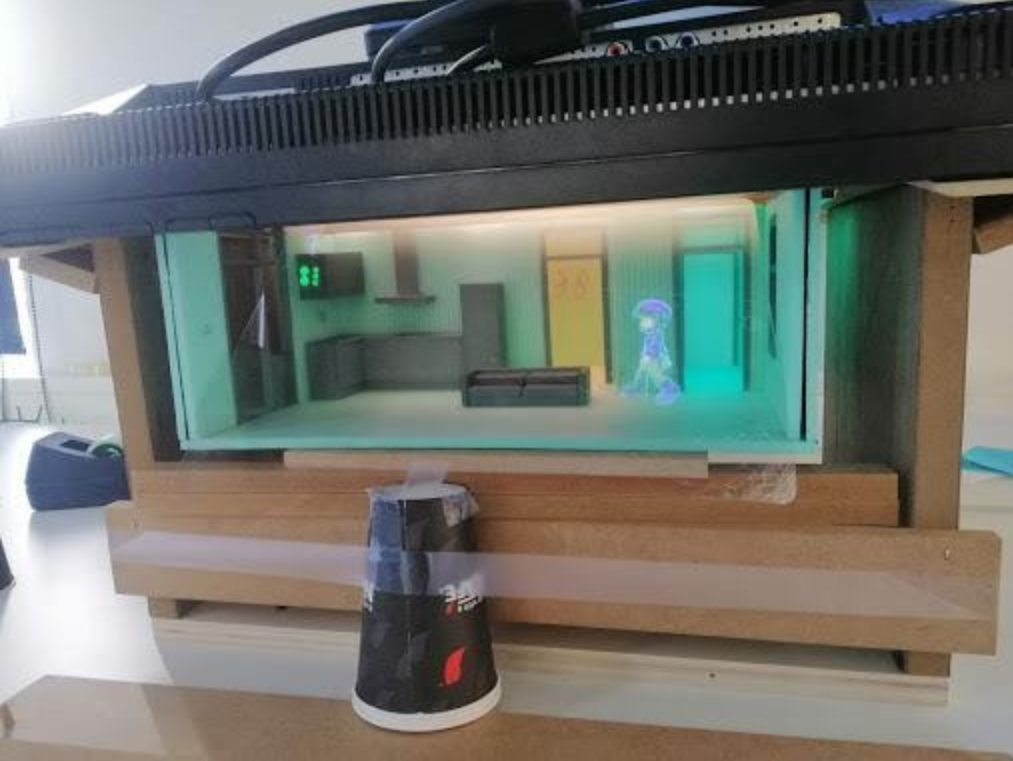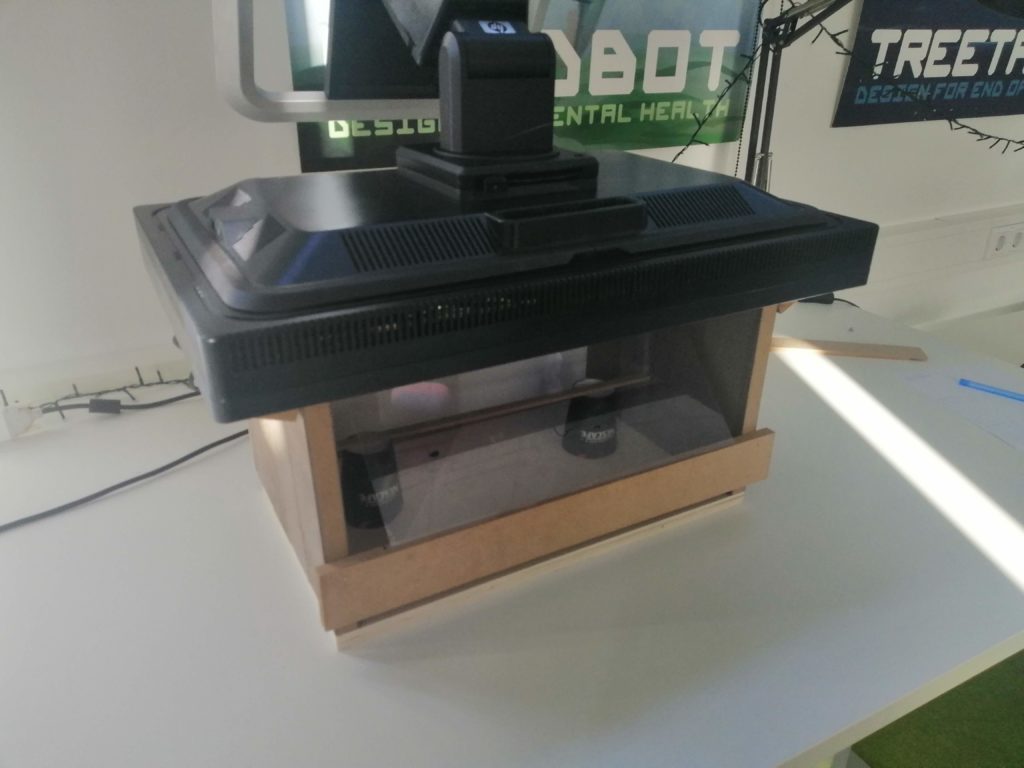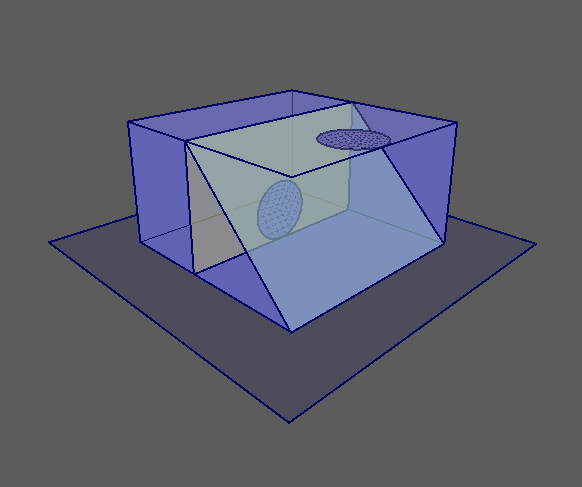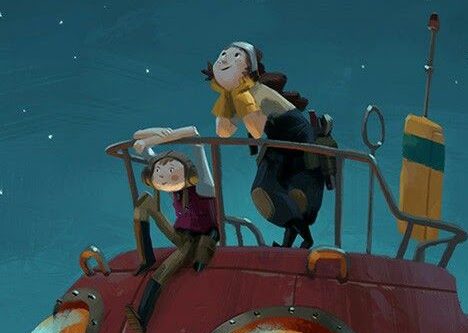When executed well the illusion of Pepper’s Ghost continues to
impress, even in the light of recent improvements in AR. However,
because of the boundaries between the physical and the virtual realities
Pepper’s Ghost images tend to look superimposed in a very artificial
way. One way to create more cohesion between the physical and digital
is to add uniform lighting.

So for a project we’re currently working on we wanted to mix physical
and digital space to create an arcade-like interactive box. One of the
more simple ways to essentially create a hologram that’s placed inside a
physically built environment using a technique known as Pepper’s Ghost.
What’s a Pepper’s Ghost?
Pepper’s Ghost is an illusion technique named after English scientist
John Henry Pepper. It used a flat sheet of glass that’s ideally invisible to
the viewer to project a ghostly version of a scene or image on the
other side of the glass.
So, our way of utilising this technique is essentially pretty simple. We
built a box without a top and an opening in the side to look into. Then
we use a computer monitor and lay it on top of the box, the screen
facing down into the box. Then we place a transparent and reflective
plate in the box at a 45 degree angle to the screen to project the images
displayed on the monitor into the physical space. At it’s core, there
isn’t much more to it than that!



One interesting thing about this technique is that anything you project
this way is placed on a specific plane. This plane starts at the
intersection point of the glass plate and the monitor screen and goes
straight down as long as the plate is placed properly at 45 degrees.
We want to place this projection plane somewhere in the middle of the
room to create depth. The box had to go deeper than the projection
plane. In our case. That meant we didn’t use about a third of the
monitor for the projection, so we decided to use it in a different way.
Dynamically lighting the scene
We can use the part of the screen that isn’t projecting to light the back
of the box in whatever way we want. Because it’s just a monitor we can
change the color, strength and placement of the light dynamically.
Both the lighting of the space and the projection are digital in this case.
This means we can relatively easily create cohersion between the
physical space and the digital projection by having the lights
dynamically influence the projected models or characters.
Masking and other clever tricks
Mixing the physical and the digital elements of the box is key to create
cohersion between the two. To do this we want the digital to be aware
of the physical in more ways than just “lighting”.
To try to do this, we can make the illusion the projection moves behind
and inside of things:
Two things are used in this case: masking and the physical object’s
position in comparison to the projection.
To create the idea the character is walking behind the blue cube, we
digitally mask the projection to appear black when the character moves
there. The projection normally appears on top of everything, so it
won’t be perfect, but it creates the right idea.
By putting a physical object on the projection plane, but still letting it
appear, it will look like the character is inside the physical object, as if it
were a separate room.
Things to keep in mind
I think there’s a lot of potential in this technique, but there’s a few
challenges that are important to keep in mind. The main one here is
that the effect starts to fade if there is too much external light coming
in. In our experiments it still worked fine in an averagely lit room, but
if it’s in direct sunlight the projection won’t show up.
The same goes for contrasting lighting or colors in the background of
the projection. Too much contrast directly behind a projected image
makes the fact that it’s always a little see-through very clear.
